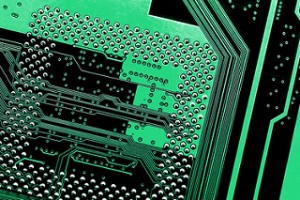Podcast: Play in new window | Download
Subscribe: Apple Podcasts | RSS
 Electrical engineer Dave Vandenbout guides us through a survey of programmable logic devices, and offers advice for young engineers wanting to succeed in the world of digital design.
Electrical engineer Dave Vandenbout guides us through a survey of programmable logic devices, and offers advice for young engineers wanting to succeed in the world of digital design.
- Brian finds his work offers a good mix of analog and digital electronic design challenges.
- The issue of signal integrity has been discussed on several podcasts, including The Spark Gap, The Amp Hour, and Pragmatic.
- Our guest for this episode is Dr. Dave Vandenbout, an electrical engineer specializing in FPGAs and digital design. Having worked previously for Bell Labs and North Carolina State University, Dave currently runs his own firm, XESS, in Raleigh, North Carolina.
- The first microprocessor that Dave programmed was the Motorola MC6800, an early eight-bit processor.
- Working at Bell Labs, our guest used a 1 MHz Motorola MC 6801 with just 128 bytes of RAM (and 2 KB of ROM) to modulate and demodulate signals for a portable data terminal.
- From the mid-sixties through the eighties, many digital circuits were constructed from the 7400 series of logic chips.
- Transitor-transistor logic (TTL) was used to construct the original 7400 series integrated circuits (ICs).
- While it was difficult to find sample microcontroller code in the early days of embedded programming, one source was Dr. Dobbs Journal, which was first published in 1976.
- Dave was on the tenure-track as an assistant professor at NC State, before deciding he didn’t want to continue pursuing an academic career.
- Books by Eric Bogatin and Howard Johnson can provide insight into signal integrity issues, says our guest.
- Early programmable devices, such as Programmable Array Logic (PAL) or Programmable Logic Arrays (PLA), allowed logic gates to be connected together without needing to rebuild an entire circuit board.
- Although Field Programmable Gate Arrays (FPGAs) provide a very high level of logic flexibility, they tend to consume far more power than microcontrollers.
- Dave suggests that engineers wanting to get into digital design focus on:
- Thinking in parallel.
- State machine design (serializing the parallel, pdf).
- Logic signal interfacing: signal levels, timing, signal integrity.
- Hardware description languages and high-level system languages.
- High-level programming languages, plus a little assembly code.
- Microcontroller architecture (bus protocols) and memory hierarchies.
- A digital signal processor (DSP) is a microprocessor that has been specially tuned to fetch both data and instructions at the same time, allowing it to quickly perform arithmetic operations on sampled data.
- Dave can be contacted via his company website (www.xess.com) or on Twitter, where he is @devbisme.
Thanks to the Creativity103 for use of the photo titled “computer motherboard tracks.” Opening music by John Trimble, and concluding theme by Paul Stevenson.